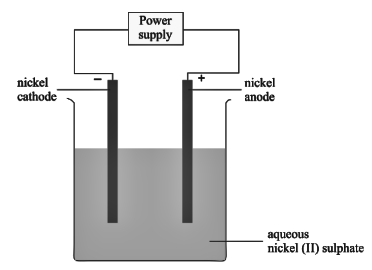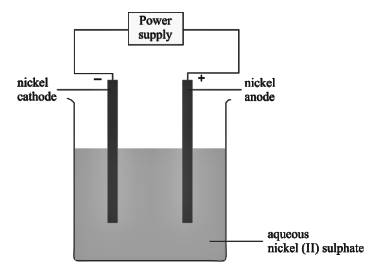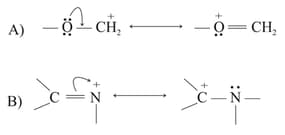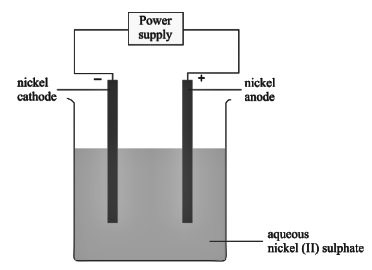EASY
Earn 100
The half-cell potentials for the metallic elements A, B, C and D are 0.8V, –0.74V, 1.1V and +0.34V respectively. Arrange these in the order of decreasing metallic character
(a)B > D > A > C
(b)B > D > C > A
(c)D > B > A > C
(d)B > A > D > C
50% studentsanswered this correctly
Important Questions on Redox Reactions
EASY
MEDIUM
EASY
HARD
An aqueous solution of nickel (II) sulphate was electrolyzed using nickel electrodes. Observe the diagram and answer the question that follows:

- Name the cation that remains as a spectator ion in the solution.
MEDIUM
HARD
An aqueous solution of nickel (II) sulphate was electrolyzed using nickel electrodes. Observe the diagram and answer the question that follows:

- Which equation for the reaction at the anode is correct?
EASY
In the following resonance structures, the curved arrow indicates that electrons are shifted from

EASY
Among the following, the strongest reducing agent is:
MEDIUM
EASY
The electrode potential, for the reduction of to in acidic medium is
V. Which of the following metal(s) will be oxidised? The reduction reactions and standard electrode potentials for and are given as
HARD
An aqueous solution of nickel (II) sulphate was electrolyzed using nickel electrodes. Observe the diagram and answer the question that follows:

- What do you observe at the cathode and anode respectively?
EASY
MEDIUM
MEDIUM
MEDIUM
HARD
The for will be :
MEDIUM
Based on these data, which of the following statements is correct?
MEDIUM
Given
and
EASY
[Given : ]
(i)
(ii)
(iii)
(iv)
EASY

